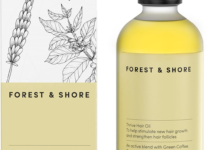Is blow-drying better than air-drying?
Well, that depends entirely on how you define “better!”
If you’re talking about which is healthier for your hair, one definitely wins out over the other.
But as I’ll show you below, when it comes to style and convenience, the answer isn’t so cut and dry (pardon the pun)!
Table of Contents
Is Blow-Drying Better Than Air-Drying?
Yes and No! The efficacy and damage caused by blow-drying your hair depend on your use of the tool.
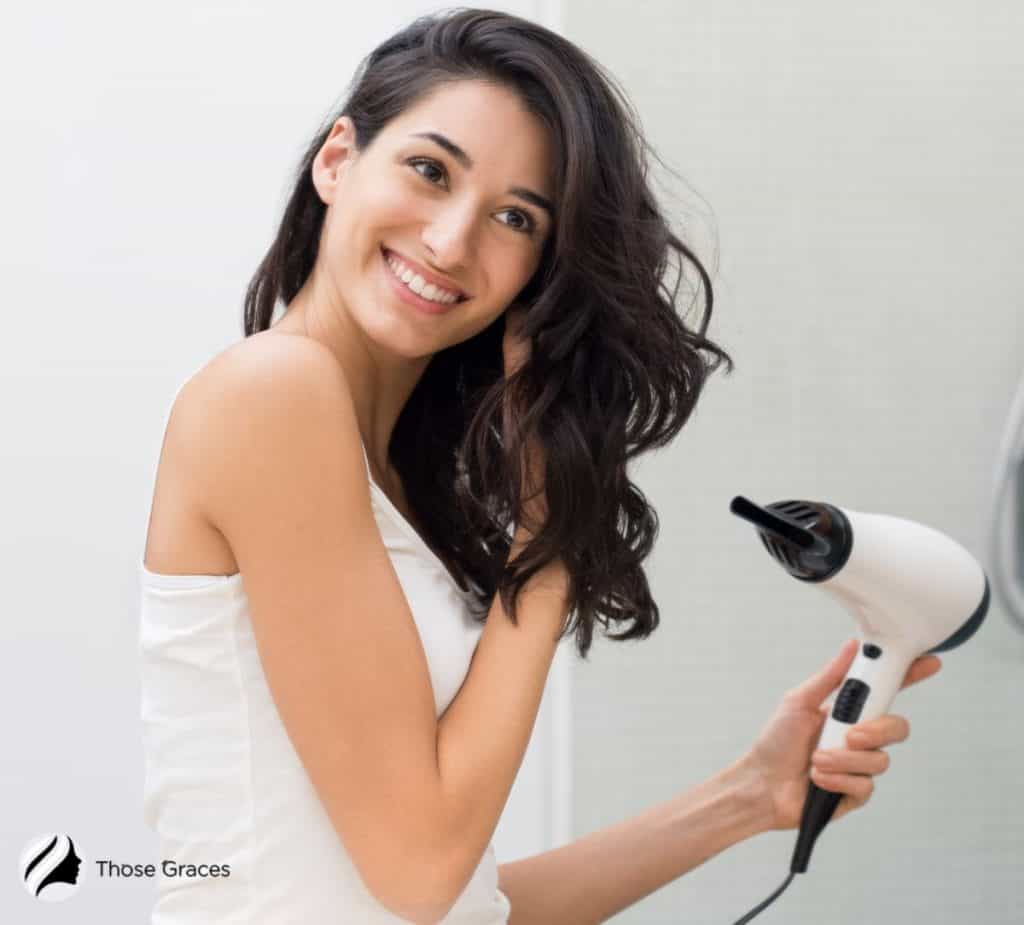
There’s no denying that surface damage is highly likely when using a blow dryer. But that’s not to say it’s an all-out war on hair dryers.
Based on one study, you can reduce the damage caused by these blow dryers [1].
If you keep a distance of about 15 cm (or about 6″) between your scalp and the blow-dryer, the damage is reduced by a large margin.
Other than keeping the tool a certain distance from your hair, you must air-dry your hair until it’s not sopping wet.
If you’re seeking an alternative for a blow dryer, consider using a microfiber towel or a soft cotton t-shirt to gently squeeze out excess moisture.
Most experts say to follow the 80-20 rule. In other words, air-dry your hair about 80% of the way, then use a blow-dryer for the last 20%.
Yes, I know, what I just pointed out seems much more inconvenient and time-consuming, but trust me, your hair will thank you.
Navigating the world of styling fine bob cuts? Swing by our fun guide on “How to Blow Dry a Bob with Fine Hair” and get those tresses on point!
Blow-drying Vs. Air-drying: Benefits
Now that you know blow-drying is not all that damaging for your natural hair, let’s begin weighing the benefits and drawbacks of each drying process.
Blow-Drying Benefits
First, blow-drying helps save time and is more convenient when compared to natural air-drying.
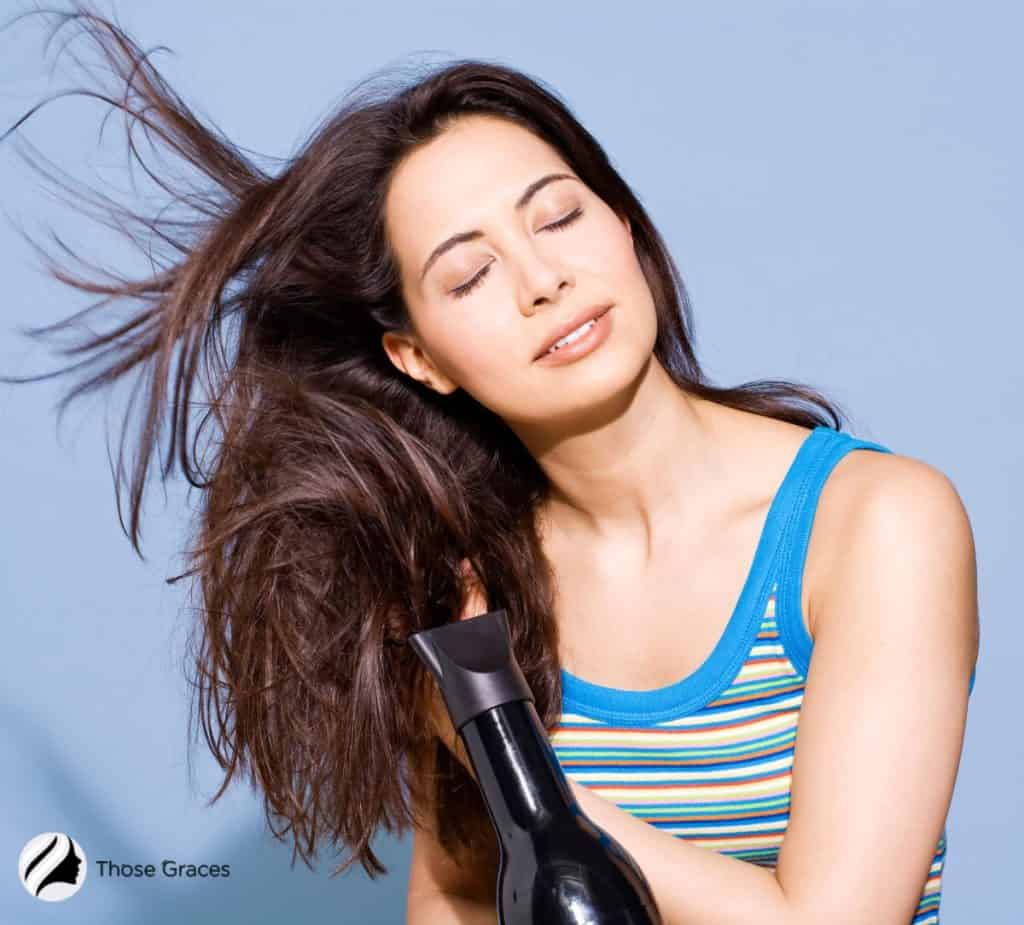
I don’t think anyone would deny that! I have a friend with crazy-thick and long hair. It takes her 30 minutes to blow dry her locks, which is longer than most.
However, it takes hours upon hours to let it air dry. She’s gone to bed with wet hair and woken up with dampness.
On top of that, blow-drying your hair makes it shinier and silkier because it seals the hair cuticle.
Air-Drying Benefits
Of course, air drying has some extraordinary benefits as well. First, you’re not exposing your hair to heat, so you don’t have to worry about frying your tresses.
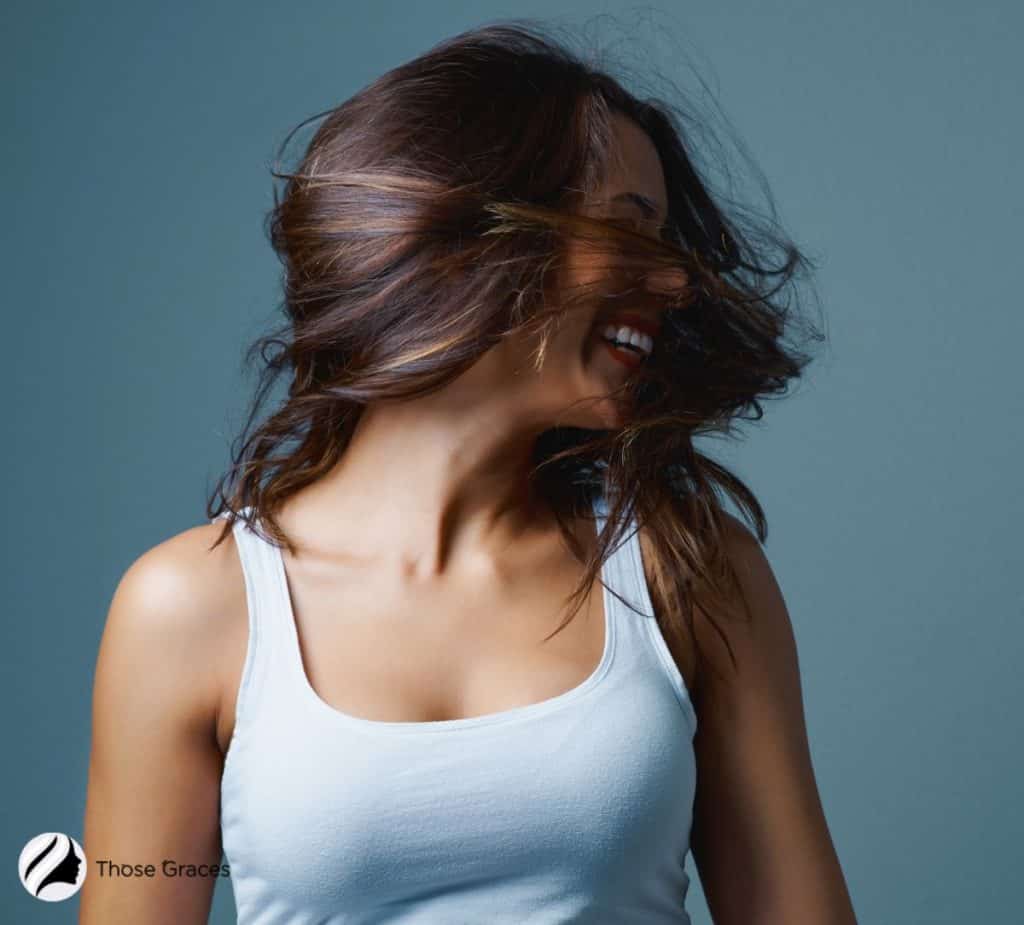
Second, if you want to go au natural and let the beauty of your true hair shine through- quirks (or corks, for my curly-haired friends) and all, then you can’t beat air-drying.
Blow-drying Vs. Air-Drying: Drawbacks
Now let’s look at the drawbacks of using a blow-dryer vs. letting your hair dry independently.
Blow-Drying Drawbacks
As I mentioned earlier, blow-drying itself isn’t excessively damaging.
But I must point out that certain aspects, such as brushing your hair too hard, over-drying, and overheating, can and will lead to hair loss and irreversible damage [2].
Doing so leads to extreme hair breakages and structural weakening of the hair shaft. Overheating will certainly cause a loss of moisture from within your hair.
Air-Drying Drawbacks
In case you thought it’s all safe and fine if you naturally air-dried your hair, allow me to bring a few things to light.
True, you’re not exposing your hair to heat, which is generally the case when using blow/hair dryers. But the main issue here is the excess retention of moisture within your hair [3].
GHD Global Ambassador Adam Reed notes,
“Hair can absorb up to 30 percent of its own weight in water.” Also, “Natural drying takes time. The longer it stays wet, the more the cortex swells and cracks, permanently damaging hair.”
After air-drying, your scalp retains moisture for a few hours. And excess water can easily result in bacterial overgrowth and, in turn, ruin your scalp.
Also, you can cause irreversible damage to your hair if it’s stretched, rubbed, or stays dry for long periods.
Also, using a towel and rubbing it against your hair for drying is a big NO. That will rip and strip your hair.
Generally, splits occur when you stretch your hair tightly while combing wet hair to speed up drying. And letting your wet hair be can lead to knots or abrasions on your strands.
After all, is said and done, the question remains. What’s the “right way” to dry your hair?
How To Dry Your Hair To Prevent Damage
By now, I’m sure you’ve become well-acquainted with the issues and benefits of both these methods.
But it’s all for naught if the health of your hair cuticles is falling apart. So, before anything else, pay extra attention to the condition of your hair cuticles.
1. Take Care Of Your Hair Cuticles
Keratin protein forms the building of each hair strand. These proteins exist as cuticles which are shingle-like structures [4].
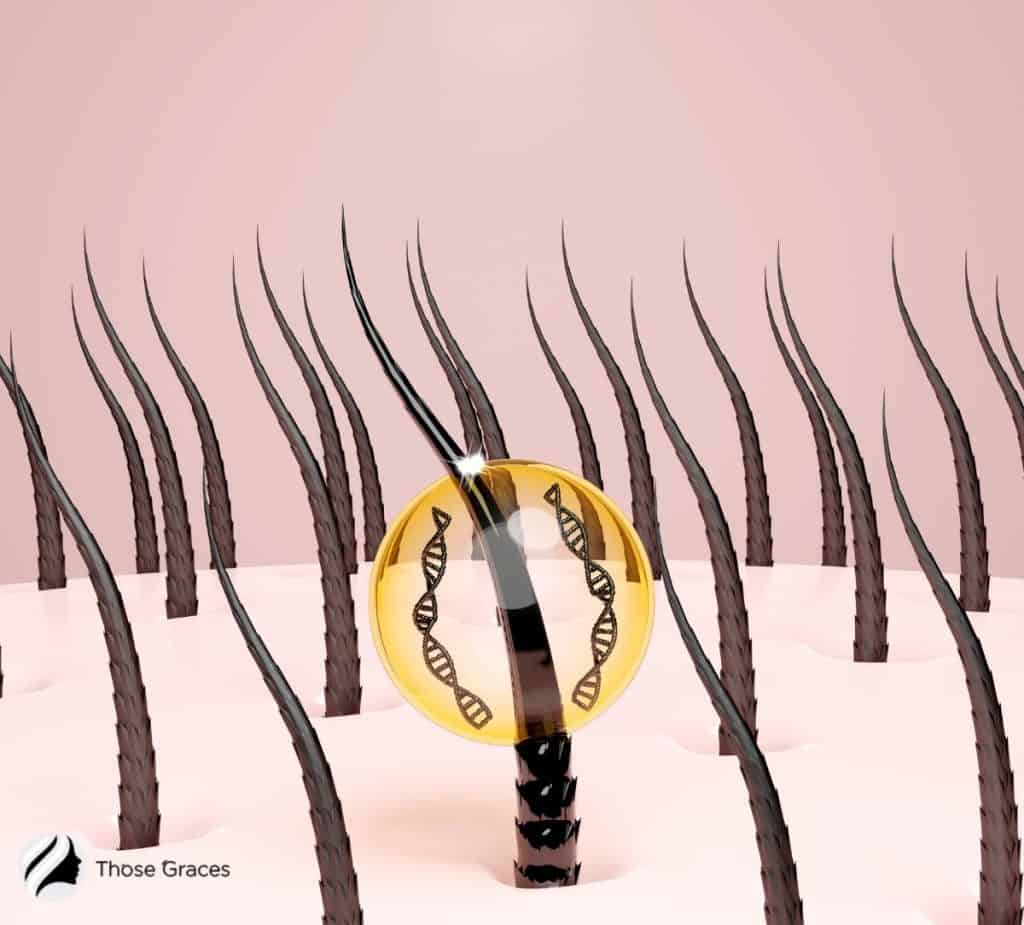
So long as you’re not compromising its structure, these cuticles maintain their protective and strong characteristics.
Also, exposing the cuticles to intense heat or excess moisture can damage the structure.
According to Toronto-based hair restoration expert, dermatologist, and MD at the Hair Club Medical Group, Jeff Donovan,
“When the cuticle layer is perfectly intact, then the hair is very shiny and doesn’t tend to break.” [5]
So, it’s clear that the secret to healthy hair is keeping the cuticle layer of the hair intact.
Now that we’ve established a foundation for the two drying processes, here are some foolproof steps to avoid needless damage to your beautiful hair.
2. Blow Drying Your Hair Correctly
Let’s start with the right way to use a blow dryer.
Dry your hair with a microfiber towel or soft t-shirt.
Take a look at this comparison video:
Before you blow-drying your damp hair, blot your wet hair dry using a soft t-shirt or microfiber towel. Do that until your hair is damp.
As Mindy from the famous YouTube channel Cute Girls Hairstyles suggests, wrap your wet hair around the microfiber towel. Twist your hair using the towel and bring it up.
If you’ve got long hair, wrap it into the microfiber towel and follow suit.
Dermatologist Shilpi Khetarpal recommends avoiding heavy towels to dry your hair. Such towels put more stress on your hair, making them more prone to breakages [6].
She says you can lessen the heat required by efficiently drying your hair beforehand.
3. Do Not Brush Your Hair While It’s Wet
Avoid brushing your wet hair with a round brush until your hair has dried out to a certain degree.
Rather, while your hair is still somewhat wet, detangle it with a comb (preferably wide-tooth).
That will prevent your hair from forming knots when it becomes dry, and the round brush won’t get stuck.
What I also find crucial is the type of brush you use. That, of course, depends on your hair type and the style you wish to achieve.
I advise you to use a ceramic brush if you have straight hair. It offers more volume by retaining more heat.
In case you have coarse hair, I recommend using a boar-bristle brush. It will help smooth unruly strands more effectively by providing the needed tension.
4. Use A Good Blow-Dryer
DO NOT compromise on the quality of a blow-dryer. I’d recommend you go for a versatile tool that offers multiple speed and heat settings.
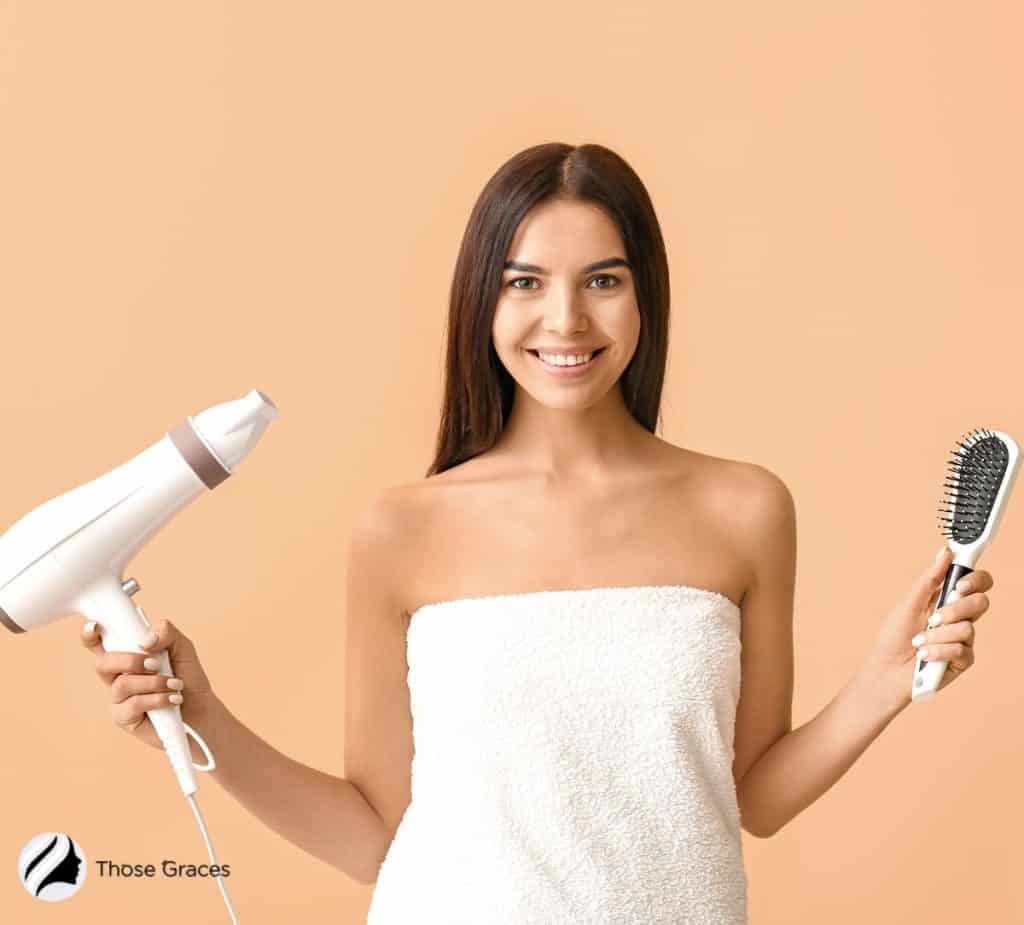
If possible, go for a blow dryer with thermal/ionic tech. Such types of blow-dryers dry your hair faster in a minimal heat setting.
Also, before the blowout, apply a mild heat-protectant spray.
5. Air-Drying Your Hair Correctly
You might think there’s no right or wrong way to airdry your hair. That’s not exactly true, though.
Prep Your Hair Beforehand.
The very first step is sealing and closing your cuticles. This will ensure that your hair remains frizz-free and smooth.
I advise you to use a mild and sulfate-free shampoo and conditioner. And if it contains glycerin or similar moisturizers, it’s a plus.
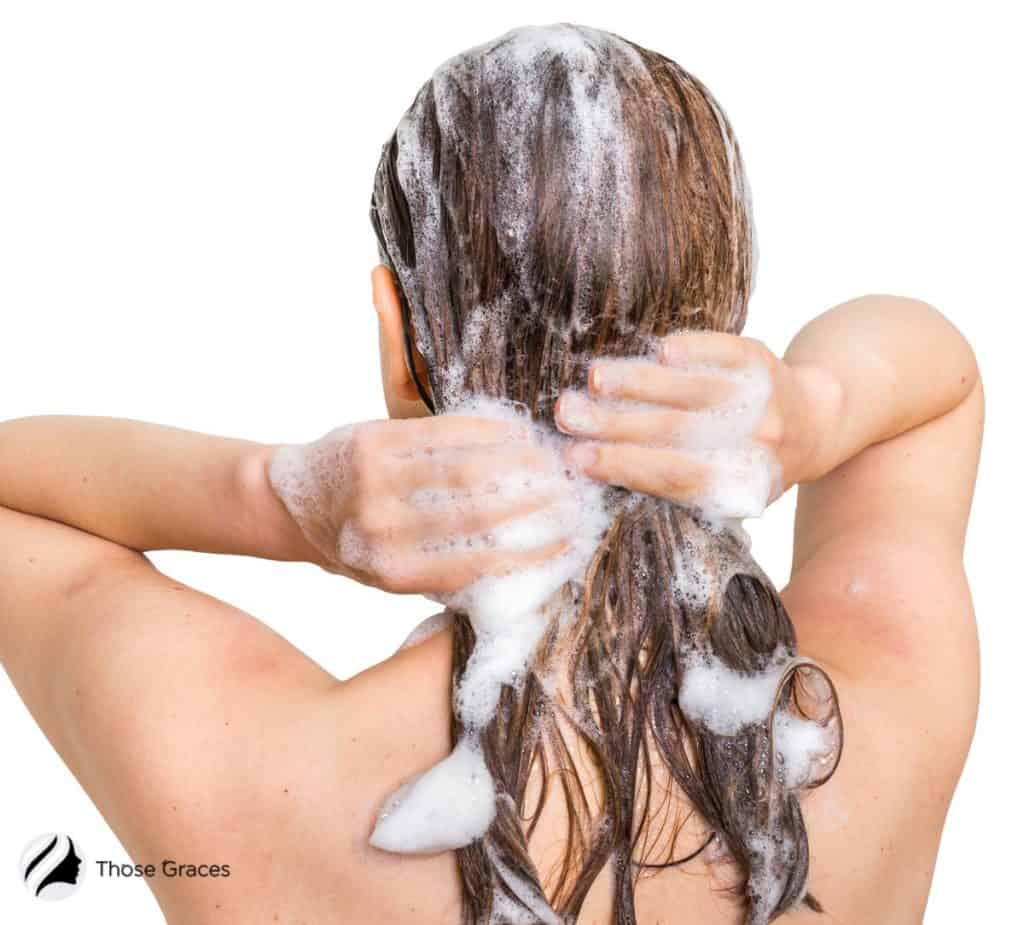
Often, I use cold water to wash out the conditioner. I find it more effective in sealing and moisturizing the cuticles from within. That means shinier, frizz-free, and smoother hair.
Air-Drying Your Hair.
As already mentioned in the sections above, be wary of the type of towels you use to air dry your hair. Most bath towels have fibers that can cause extreme damage and frizz.
I love the texture and feel of the microfiber towel on my hair. It helps reduce hair swelling, dries my hair much faster, and has a gentle action.
Use A Leave-in Conditioner.
Unless you don’t mind dealing with pesky flyaways, I suggest using a mild leave-in conditioner to prep your hair for styling. It helps combat heat damage, humidity, and frizz by forming a protective outer layer around each strand.
Blow-Drying Vs. Air-Drying: Expert Tips
While blow-drying your hair, ensure you’re blowing towards your ends.
Remember to style your hair after the drying styles. That will help prevent your hair from getting tangled and frizz-free.
You must spray an ample amount of mild heat protectant spray before you blow-dry your hair. Avoid over-drying or overheating your hair and scalp.
You can skip drying most of your hair if you’re running late. But I suggest against doing the same for your roots and scalp.
Let your wet hair rest on the scalp. Avoid rolling it up. Use heat on a medium setting (if possible, on the lowest setting) when blow-drying your hair.
Maintain a 15 cm distance from the scalp.
Do not, I repeat, DO NOT comb or brush your wet hair.
FAQs
How can I dry hair most effectively?
The result is silkier, shinier, and, most importantly, healthier hair.
Is air drying better for curly hair?
But make sure to get rid of excess moisture by using a t-shirt or microfiber towel for blotting your hair dry.
How do I prevent frizz after a blowout?
It’s because frizz results from your hair expanding during the drying process right after a shower.
Conclusion
Blow-drying and air-drying can both have detrimental effects on your hair.
That is if you don’t follow the correct way to use hair tools and procedures. I strongly advise you to use both these methods to maintain hair health.
You might have to tweak a few things here and there based on your hair type. But overall, stick to a combination.
That way, you’ll be able to prevent hair breakage, damage to the scalp, split ends, and ultimately keep your hair healthy.
Also, consider checking out my expert guide on blow-dry layered hair and twist out to learn more.

Let me know what works best for your hair type by leaving your comments below.
References
- 1. Lee Y, Kim Y-D, Hyun H-J, Pi L, Jin X, Lee W-S. Hair Shaft Damage from Heat and Drying Time of Hair Dryer. Annals of Dermatology [Internet]. 2011 [cited 2021 Dec 8];23:455. Available from: https://www.ncbi.nlm.nih.gov/pmc/articles/PMC3229938/
- 2. How to stop damaging your hair [Internet]. Aad.org. 2021 [cited 2021 Dec 8]. Available from: https://www.aad.org/public/diseases/hair-loss/insider/stop-damage
- 3. 0. The Best Way to Air-Dry Your Hair, According to Experts [Internet]. Healthline. Healthline Media; 2021 [cited 2021 Dec 8]. Available from: https://www.healthline.com/health/beauty-skin-care/air-dry-hair#should-you-air-dry-your-hair
- 4. https://www.facebook.com/verywell. What Is Keratin? [Internet]. Verywell Health. 2020 [cited 2021 Dec 8]. Available from: https://www.verywellhealth.com/keratin-5083786
- 5. Dr. Jeff Donovan. Donovan Hair Clinic [Internet]. Donovan Hair Clinic. 2021 [cited 2021 Dec 8]. Available from: https://donovanmedical.com/
- 6. Shilpi Khetarpal, MD | Cleveland Clinic [Internet]. Cleveland Clinic. 2021 [cited 2021 Dec 8]. Available from: https://my.clevelandclinic.org/staff/19843-shilpi-khetarpal

